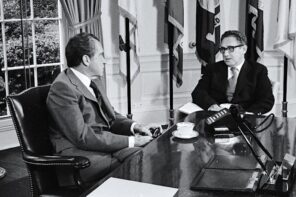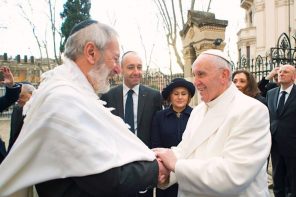There are different kinds of spiritual gifts, but they all come from the same Spirit. There are different ways to serve the same Lord, and we can each do different things…. If our bodies were only an eye, we couldn’t hear a thing. And if they were only an ear, we couldn’t smell a thing. But God has put all parts of our body together in the way that God decided is best.
—I Corinthians 12: 4—6, 17—18 (CEV)
Third Way’s* recently released “Come Let Us Reason Together Governing Agenda” has sparked lively discussions about the policies it puts forward, but it has also cast in bold relief some tensions and factions in the growing chorus of voices that are politically progressive and religious. The two-year initiative set out to find common ground based on shared values between two groups that have traditionally been some of the fiercest political adversaries: political progressives and white evangelicals. Moreover, the project deliberately focused on some of the toughest issues that have been at the root of the worst political divisions of the last few decades (abortion and gay and lesbian issues) and more recent issues that have caused deep divides in the American electorate (torture and immigration).
Under the leadership of Rachel Laser, director of the Third Way Culture Program, “Come Let Us Reason Together” has already accomplished two short-term goals: 1.) it has sparked serious conversations about the promise of this agenda to heal some of our nation’s deepest divides, including engaging in face-to-face conversations with members of congress in the Democratic Faith Working Group of the US House of Representatives and with key members of the Obama administration; and 2.) it has highlighted an emerging evangelical center that is declaring its independence from the old religious right in important ways.
One unintended consequence of the project has been to highlight the existence of two streams in the left-of-center faith world. While these groups are not mutually exclusive, they flow from different sensibilities about public engagement and embody a significantly different spirit. On the one hand, some of the most vociferous critics of “Come Let Us Reason Together” have been from a loose confederation of contributors to the recent book Dispatches from the Religious Left, who generally portray a more ideological and confrontational public presence. On the other hand, the research for my own book, Progressive & Religious—based on interviews with nearly 100 religious leaders—identified a broader group of religious progressives who were largely uncomfortable with the “religious left” label and who are intentionally working to move beyond old ideological divides and build new coalitions.
Three differences between these streams are at the heart of the matter:
1. A World of Enemies vs. Potential Partners. One of the most notable differences between the Dispatches group claiming a new religious left mantle and the broader group of religious progressives is that the former often adopt an embattled mentality that tends to divide the world into an ever-shrinking cadre of ideologically pure, litmus-tested allies and the remainder, a world of enemies to be defeated. This mindset has generated some surprising parallels between the left and the right.
Compare for example, two strikingly similar responses to “Come Let Us Reason Together”: one by Tony Perkins, head of the James Dobson-affiliated Family Research Council, a key organization on the religious right, and one by the Rev. Osagyefo Uhuru Sekou, a contributor to Dispatches from the Religious Left.
Discussions of the “culture wars” in America remind me of the Cold War. Some people were willing to end it by surrendering much of the world to communist domination. Ronald Reagan’s approach was simpler: “We win, they lose.” (Perkins, 2007)
The evangelical stream of the religious right is part of a tradition that opposed King and one that now stalls queer rights, supports a ban on abortion, and sanctified the war in Iraq. Historically, only the defeat of this stream has served to expand democracy. (Sekou, 2009)
This self-righteous attitude that takes aim at enemies who must be defeated has always been one of the temptations of the prophetic religious tradition, with its iconography of the lone, persecuted prophet. Taken to its extreme, this posture on the religious left can paradoxically become a mirror image of the religious right. Amid the winds of ideological purity, Jesus’ admonition to his disciples to love their enemies and remember that “anyone who isn’t against us is for us” (Matt. 9:40, CEV) is too often distorted to sound more like former President Bush’s declaration to the world that “Either you are with us, or you are with the terrorists.”
Another side effect of the binary mindset is that it erases the complexities of the world beyond the safe, well-mapped boundaries of the religious left compound. Sekou continues to operate with a stereotype of evangelicals that even mainstream reporters have finally abandoned. As I and others have documented, evangelicals are not a “stream of the religious right”; rather, the religious right represents only a portion of evangelicals: less than half (46%) of evangelicals are traditionalists, and the majority of evangelicals are centrists and modernists (40% and 14% respectively) who are potential allies for progressives on many issues.
Another unfortunate side effect is that the circles of acceptable allies gets drawn ever smaller. For example, Rev. Debra Haffner of the Religious Institute on Sexual Morality, Justice, and Healing, and another Dispatches contributor, noted that some of the policies in “Come Let Us Reason Together” represented an “important step forward,” but she also accused the initiative of “false advertising” declaring that, by her narrow definition, only one supporter was actually “progressive.” The progressive supporters of the initiative who, in addition to Third Way, include the Interfaith Alliance, the Anti-Defamation League, and the Religious Action Center for Reform Judaism, would be curious to know who made the cut. The project also received statements of support from People for the American Way and NARAL, whose progressive credentials are also presumably challenged by Haffner’s declaration.
In contrast to the posture of this new religious left is the more humble, less defensive attitude that is more characteristic of the broader progressive religious movement. Compare the demeanor above, for example, with the sentiments that Sister Joan Chittister, OSB, co-chair of the Network of Spiritual Progressives, expressed in an interview for Progressive & Religious:
I don’t want to be a part of anything anymore in my life that makes those boundaries barriers. I don’t want to be defined as right or left. I want to be defined as a Christian with the world in mind. The people who are really leaders are trying to move us all without internecine warfare into a very spiritual world, a very new world.
From the vantage point of the broader group of religious progressives, those with whom we differ come first into view as potential partners and not presumed enemies.
2. Incivility vs. Good Faith. Another unfortunate mark of the posture of this segment of the new religious left is its snarkiness and, at times, sheer incivility. This take-no-prisoners mentality is born less out of churches and communities, where maintaining relationships are an important goal, than out of the blogosphere, where scoring quick points is the name of the game. While certainly any undertaking of consequence will spark debate and disagreement, some voices of this slice of the new religious left have abandoned respectful dialogue that attributes good faith to those with whom one disagrees. For example, whatever one’s reservations might be about whether the “Come Let Us Reason Together Governing Agenda” goes far enough, it is indisputable that it marks movement in key policy areas. It is the first time that mainstream evangelicals have publicly supported policies on abortion that have no bans or restrictions and that include support for prevention of unintended pregnancy, including comprehensive sex education programs. It is also the first time that mainstream evangelical leaders have supported any positive policy for gay and lesbian equality. We call that progress.
Rabbi David Saperstein, director of the Religious Action Center for Reform Judaism who supported the initiative and is featured in Progressive & Religious, lauded these achievements even while noting some personal differences:
The “Come Let Us Reason Together” Governing Agenda is a remarkable initiative that has the potential to provide a vitally needed breakthrough in reshaping the political and religious discourse of America… My own views differ on some key issues. But I am struck not by the differences exposed by this important document, but rather by the common ground it wisely illuminates. It is a true cause for hope.
Compare Rabbi Saperstein’s response to several from the self-proclaimed new religious left. Pastor Dan Schultz of Street Prophets, another contributor to Dispatches from the Religious Left, led with a headline: “The End of the Culture Wars (Ha Ha).”** Rev. Sekou took pains not only to disagree with our approach but to condemn it in shockingly provocative terms as “cowardice,” a “betrayal of the best of the democratic tradition,” and “racist” (because it did not include black religious leaders, even though this was not the goal of the project).
Noted church historian George Marsden famously defined a fundamentalist as “an evangelical who is mad about something.” Similarly, too often this new religious left is populated by religious progressives who are angry about something. To be sure, there are plenty of injustices in America about which to be indignant and even outraged, and Pastor Dan’s point about the need to sometimes be “damnably disruptive” is well-taken. But it is important to remember that anger is not the only means of disrupting patterns of injustice, and we need not only to disrupt old patterns but to build new coalitions. Moreover, the anger I am describing is more generalized, too often turning from policies to the personal. This general posture tends to cast doubt on the merit of bridge building and, worse, impugns the character, credentials, and motivations of those undertaking difficult acts of reconciliation.
3. Nostalgia vs. A New Moment. Finally, on both the left and right, some of the rancor seems to be driven by a sense of nostalgia for a bygone time when “our voices” dominated the public imagination. On the right, as David Gushee has pointed out in his book The Future of Faith in American Politics, there is a longing for a simpler, more homogeneous time where, at least in geographical enclaves like the South, white evangelical voices went virtually unchallenged. On the left, there is often a similar pining for the era when the “Christian Century” was finally dawning, when Rauschensbusch, Ryan, the Niehbuhrs, and Tillich commanded the national stage, or when mainline leaders took up prominent places alongside King and Heschel in the national Civil Rights Movement.
But we are standing at a genuinely new moment. On the downhill slope of the rise and decline of the mainline and the swell and ebb of the religious right, we have before us a genuinely new task. Facing the reality that neither the religious left nor the religious right accounts for more than 20% of the country, we must embrace the passing of the time—if it ever existed—where one segment of our amazingly diverse religious nation could legitimately hope to speak for the whole. This doesn’t mean that we don’t need prophets who at times are inconveniently disruptive and call us to further faithfulness. We need clarion voices on the religious left. But as we read the signs of our own time, it is clear that the long, hard work of reasoning together and building unlikely coalitions that move us steadily in positive directions—work taken up by a broader group of religious progressives—should also be celebrated and honored as a work of faithfulness. Policies built democratically are never perfect, but at a time when our new president is calling on us to work across ideological divides, I am hopeful that more of us will turn our energy to gathering rather than throwing stones.
*Full Disclosure: Dr. Robert P. Jones, President of Public Religion Research, served as principal religion adviser and signatory to Third Way’s “Come Let Us Reason Together” initiative and is the author of Progressive & Religious: How Christian, Jewish, Muslim, and Buddhist Leaders are Moving Beyond the Culture Wars and Transforming American Public Life. In addition to Rachel Laser of Third Way, other lead signatories of the Come Let Us Reason Together Governing Agenda include Rev. Joel Hunter of Northland Church, Dr. David Gushee of Mercer University, Rev. Sam Rodriguez of the National Hispanic Christian Leadership Conference, Dr. Ron Sider of Evangelicals for Social Action, and Katie Paris of Faith in Public Life.
**Note: As noted above, these groups are not mutually exclusive; Schulz was also interviewed in Progressive & Religious.




